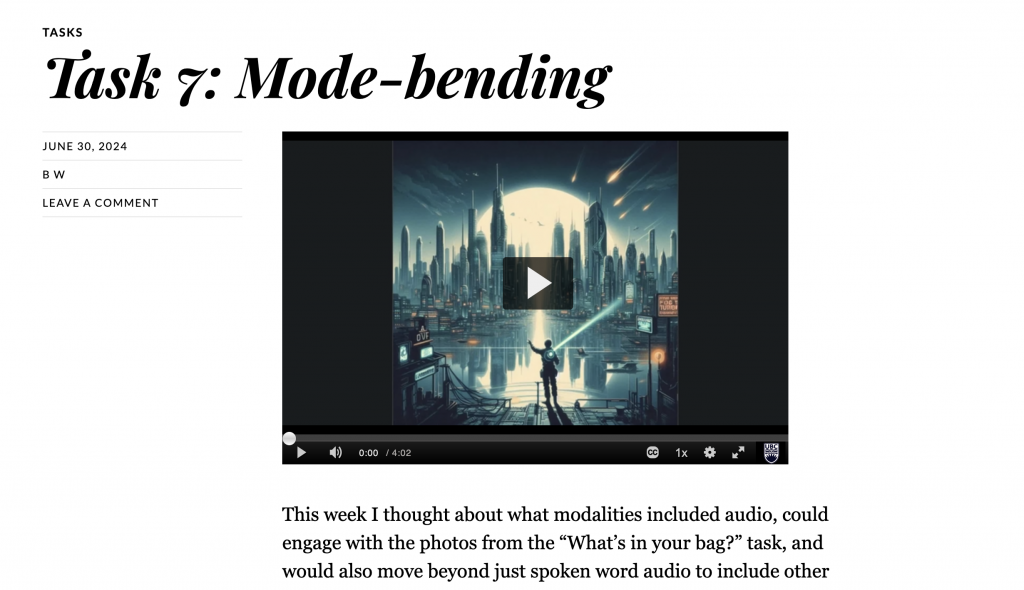In her post, Brie chose to utilize the latest generative AI technology to create a podcast episode to share and present the contents of “What’s in her bag?”. I was particularly impressed with her take on setting this podcast episode in the future and she was the “thawed” guest who was there to share stories and perspectives. She did a spectacular job of integrating different technological applications that assisted in creating the music, script, and even the AI-generated voice for the host. It has inspired me to try these applications as well. This podcast format provided an easily digestible way for listeners to understand what life might be like in the “past” and how we go from one place to the next with all the items and necessities that we need. As she noted, she wanted to create a visual, audio, and linguistic artifact and she did just that.
The visual for the podcast was futuristic and the intro music caught my attention. The podcast was easy to follow as the host’s voice was calm and warm and the information was provided at a suitable pace. The script was easy to understand and activated the listeners’ imagination with a sense of what it would feel like to live in the future. I appreciate how Brie was the guest of this podcast and she presented the items in her bag in a very systematic way. She first explained that in the past “humanity used to be limited to a very physical form…a lot of time invested in getting from [one] physical location to [another] physical location.” She referred to her bag as an external storage unit. I was intrigued as she explained how the items were incorporated into her daily life in the past.
Brie’s work highlights the unique and creative ways in which we can use different technological application tools to make our ideas come to life. My own project involved creating a video with audio and visual additions to ensure that accessibility to my audience was present. I used a video editing application to add text and a variety of pictures and visuals to it. In addition, I added a voice-over for the audio element.
In conclusion, Brie’s work and my video serve as examples of the importance of considering multiple modes of communication to represent oneself. The New London Group emphasizes the various modes of representation and the importance of the elements in the Multiliteracies paradigm (NLG, 1996). They emphasize that all meaning-making involves multiple modes. When we utilize all the modes effectively, we are able to communicate positively and meaningfully.
Reference
New London Group. (1996). A pedagogy of multiliteracies: Designing social futures. Harvard Educational Review, 66(1), 60-92.
